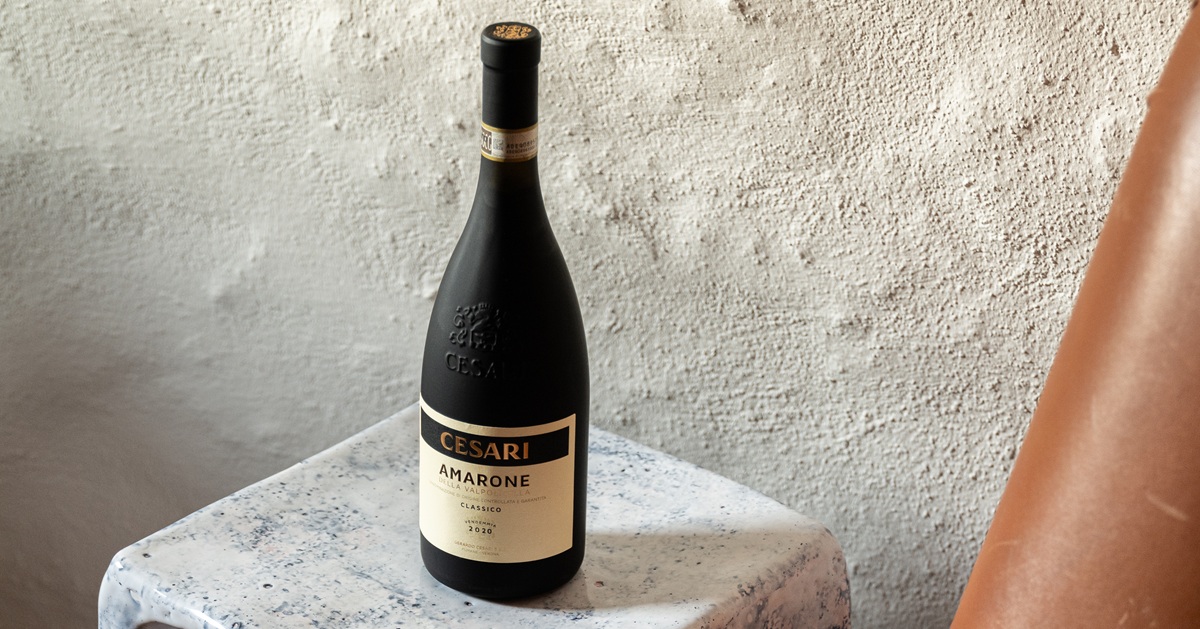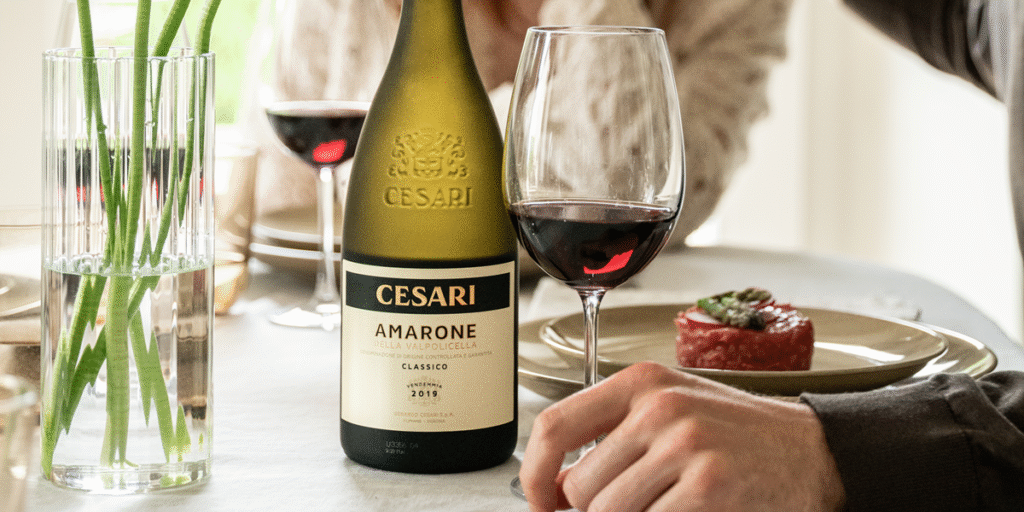Amarone della Valpolicella: How to Serve and Enjoy It at Its Best

Discover how to serve and taste Amarone della Valpolicella at its best: ideal temperature, glassware, decanting, and food pairings for a unique experience.
Amarone della Valpolicella is a prestigious red wine that symbolizes Italian winemaking excellence. For Cesari, it is the wine that began our journey with Valpolicella wines, starting with the 1971 vintage, one of the first in Italy to be exported to the United States.
Originating from the hills of Verona, this wine stands out for its aromatic complexity and robust structure, resulting from a grape drying process that enhances its unique characteristics. Serving and tasting Amarone with specific care allows one to appreciate its quality and refinement fully.
The Importance of Serving Amarone Correctly
Properly serving Amarone is crucial to highlight its organoleptic features. The correct temperature, choice of glass, and decanting are key elements that influence the sensory experience offered by this wine.
An Iconic Wine
Amarone della Valpolicella represents the nobility of Italian wines, recognized internationally for its excellence. Its production, limited to the Valpolicella area in the province of Verona, follows traditional methods that guarantee high quality.
How to Serve Amarone Correctly
- Ideal Temperature – Amarone should be served at a temperature between 16°C and 18°C (60,8-64°F). Temperatures that are too high can accentuate the alcoholic perception, while temperatures that are too low can diminish the aromas and structure of the wine.
- Choose the right glass – It is advisable to use large red wine glasses, such as “balloon” glasses. Their shape allows better oxygenation, favoring the concentration and expression of Amarone’s complex aromas.
- Decanting – Decanting Amarone is essential, especially for older vintages. This process allows for the separation of any sediments and lets the wine breathe, enhancing its aromas and flavors. It is recommended to decant Amarone at least 30-60 minutes before serving
The Art of Tasting Amarone: All Its Phases
- Appearance – Observing the color of Amarone, which ranges from intense ruby red to garnet with aging, is the first step to appreciating its quality.
- Aroma (Nose) – Bringing the glass to the nose, you can perceive notes of ripe fruit such as cherry and plum, accompanied by hints of spices, cocoa, and vanilla derived from barrel aging.
- Palate – On the palate, Amarone offers a full-bodied and velvety structure, with soft tannins and a long, enveloping finish.
- The Slowness of Pleasure – Amarone is a wine to be savored slowly. Sipping it gently allows one to grasp the depth and complexity of its flavors, making the tasting a meditative experience.

Where to Store Amarone and Its Longevity
To ensure proper conservation, Amarone should be stored in a cool, dry place, with a stable temperature between 12°C and 16°C. It is advisable to keep the bottles horizontally, so the cork remains in contact with the wine, preserving its integrity.
Moreover, thanks to its structure and alcohol content, Amarone has great aging potential. If stored adequately, it can evolve positively for over 10-15 years, developing even more complex aromas and flavors. In particularly suited areas, such as Marano di Valpolicella, “home” of our Amarone Bosan, it is possible to appreciate historic vintages that show how this wine is destined for extreme elegance over time. The Bosan Vault of the Cesari winery in Fumane is the testimony, with over 10,000 bottles ranging from the 1997 to 2015 vintages.
Conclusioni
By following these tips, one can fully appreciate Amarone della Valpolicella, making every tasting a unique and unforgettable moment.
To experience it in full, come and discover and taste Cesari’s Amarone in the cellar, to uncover all its secrets.
